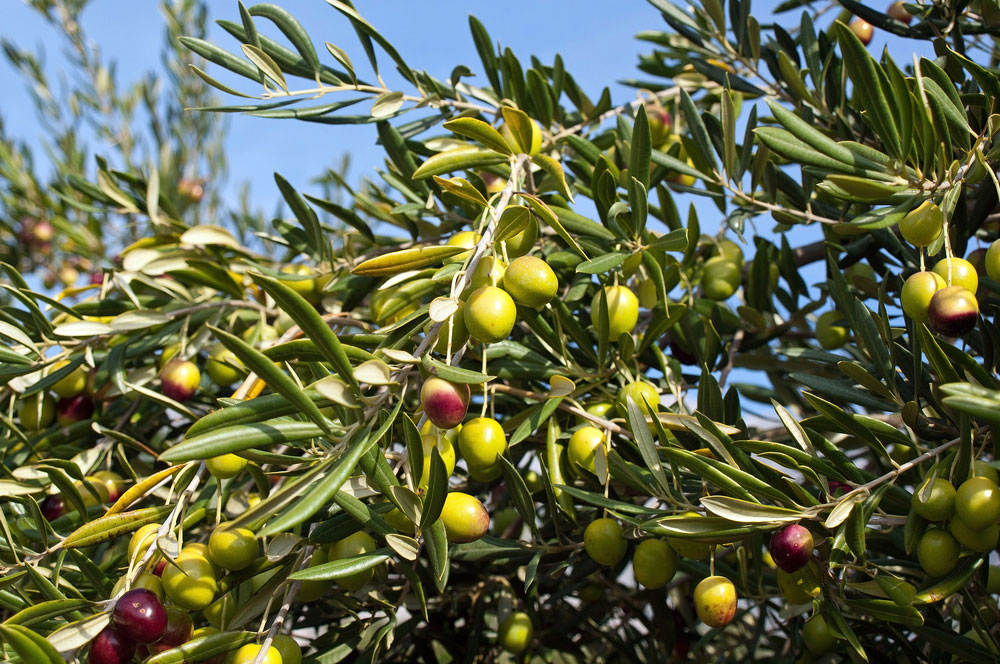It’s olive pruning season here on our Florida farm so we thought it would be a good time to share our complete guide to pruning olive trees. In this guide, you’ll learn all about olive tree care, but specifically, when to prune, how to prune, and when not to prune. We’ll also dive into some of the tools you need to prune your olive tree and why pruning your olive tree is important.
In general, olive trees are slow-growing plants, especially when they’re planted indoors. This means it's important to wait until your olive tree is the right size before pruning. That being said, we recently had a customer reach out to us because their 3-year old olive tree had grown so much over the summer and fall that they had to find a new place for it in their home. So, pruning can begin as early as 24 months in quick growing trees.
While you’re likely familiar with olives themselves, if you’re not familiar with the olive tree, it’s a perennial evergreen tree that can be found in many countries around the world. The plant is very sensitive to environmental changes, so if you’re growing your olive tree in a container it’s important to provide it with proper care when you move it inside for the winter. Whether you’ve received your olive tree as a housewarming gift or purchased it for another occasion, we’re here to help.

Why Should You Prune Your Olive Tree?
Like most trees, pruning an olive tree is a necessary part of caring for your tree. Pruning removes dead and diseased branches, shapes the tree, and stimulates new growth. If you chose your olive tree so that you can cultivate its fruit, pruning is also important for getting the most olives out of your olive tree.
Good pruning also means keeping your olive tree from growing too tall. Whether you’re growing your olive tree in a container and don’t want it growing through the roof or you’re growing your olive tree for fruit and don’t want your tree to outgrow your ladder, keeping your tree from growing too tall with pruning can be a wonderful solution.
With olive trees specifically, their fruit is known to thrive in full-sun conditions. In fact, according to The Mediterranean Garden Society, olive flowers that are too shaded will not fruit in large numbers, and those that will fruit don’t produce good levels of oil. This means that you might want to prune your tree if it is getting too dense as you want the sunlight to be able to reach all parts of your tree, especially its flowers and fruit.
When Should You Prune Your Olive Tree?
The best time to prune an olive tree depends on your climate and where you live. If you live in a cold climate, it’s best to wait until late winter or early spring before pruning so that the tree has time to recover from winter before pruning. It is especially important to wait until the winter rains/snow are over because pruning will open up entry points for water-borne diseases.
But, what month you prune your trees will depend on your region. If you are in a region with an average temperature below 50 degrees Fahrenheit, then it’s best to wait until March or April before pruning an olive tree. On the other hand, if you live in a warmer climate such as Southern California or Florida, then it’s okay to start pruning in February.
If you don’t prune your tree at the end of winter/early spring, you can still prune your olive tree all the way up until early fall. Some people prefer to wait to prune their olive tree until after their trees have bloomed so that they don’t cut off any new growth.
How Should You Prune Your Olive Tree?
When pruning your olive tree is it important to only prune the correct branches. Like we mentioned earlier, it is best to not let your olive tree grow too dense, which is why open-center or vase pruning is often very successful with olive trees. Open-center and vase pruning work by removing the tree’s central branches, which means sunlight can get into all areas of the tree.
You can also always clean up the growth around the base of the trunk. After this, things get a little trickier. There is a little skill required when pruning your olive tree, but it is nothing that can’t be learned through trial, error, and a little bit of love for your little olive tree.
When pruning, your goal should be to leave one single up and out (vertical) shoot on the top of each of the main branches. Most trees have three to four of these up and out shoots, but you can go ahead and chop most of the other vertical branches off. It’s not always easy to identify the vertical branches, but you can use your best judgment. You can leave anything that is growing from a 45 degree angle or hanging off your tree as those branches will produce the most abundant fruit.
If some of your hanging branches are looking weak, those can also be trimmed as well as any dead or damaged branches.
What Kind of Tools Do I Need To Start With?
There are a few different tools that you can use to prune your olive tree. The most common, and usually the best, tool to use when pruning your olive tree is shears. There are many types of shears, but we suggest bypass pruners or anvil pruners depending on the size of your tree.
Hand saws or chain saws can also be used when pruning large olive trees, but we suggest using these tools with caution.
Overview: Pruning Olive Trees
Overall, learning to prune your olive trees is a skill that can work wonders for this fruiting, evergreen tree. There are many reasons to prune your olive tree and now that you know why, how, and when to prune your olive tree, you are in a great place to get started. We wish you the best of luck, but you can always contact us here.

